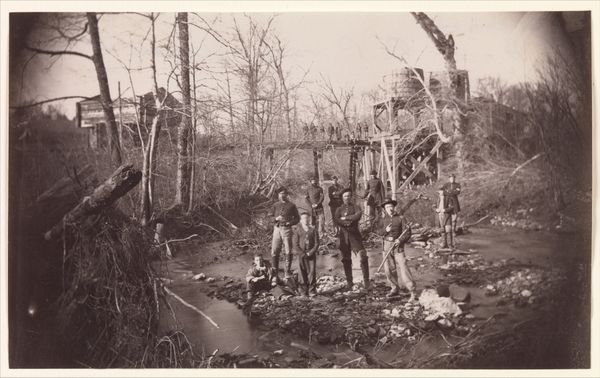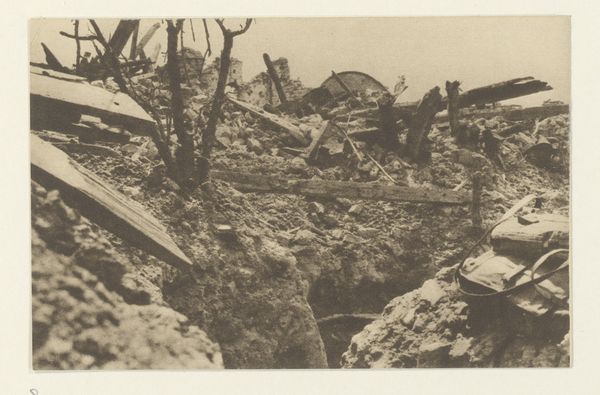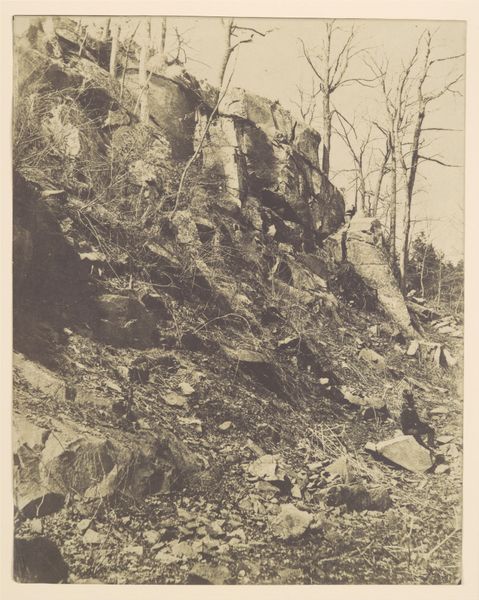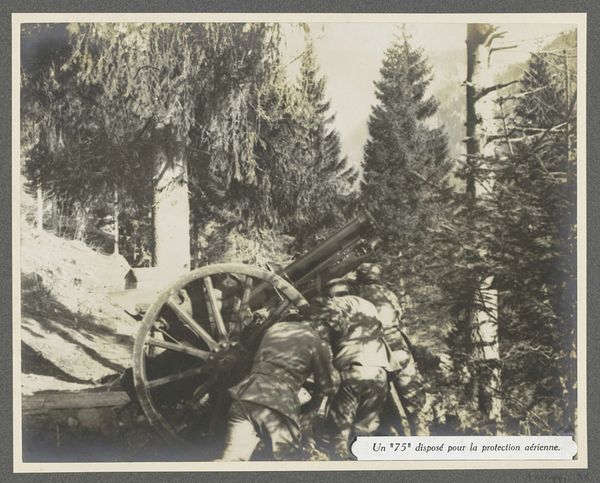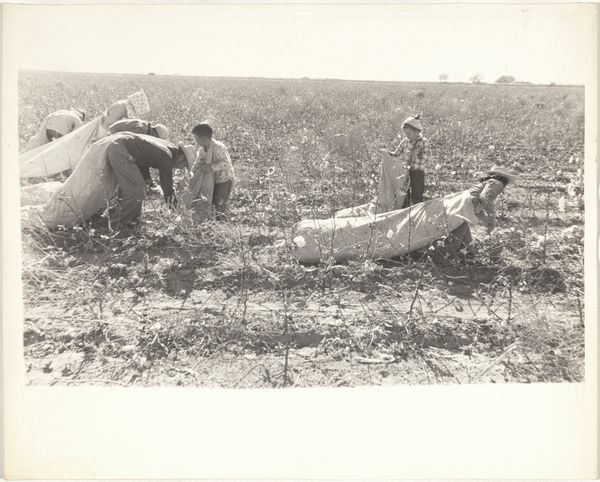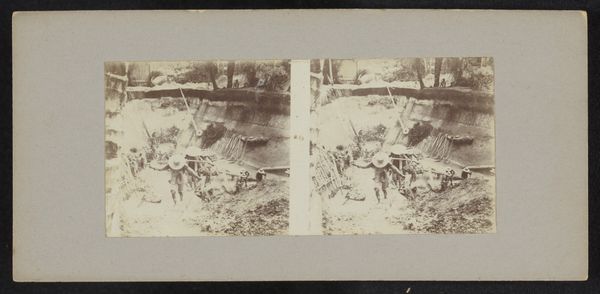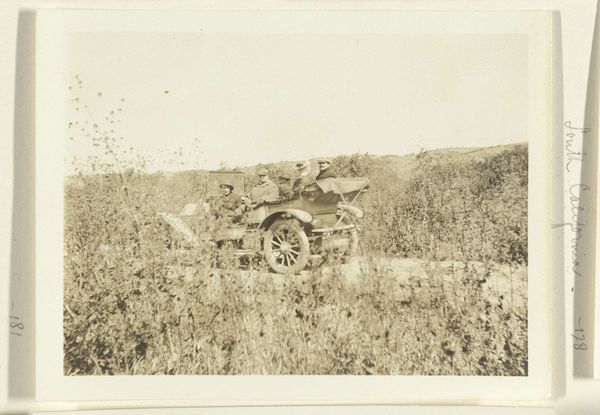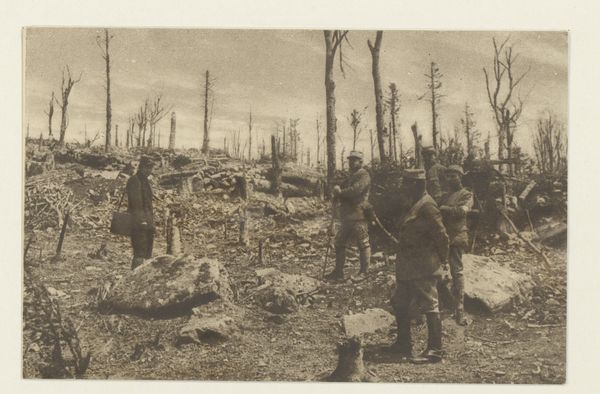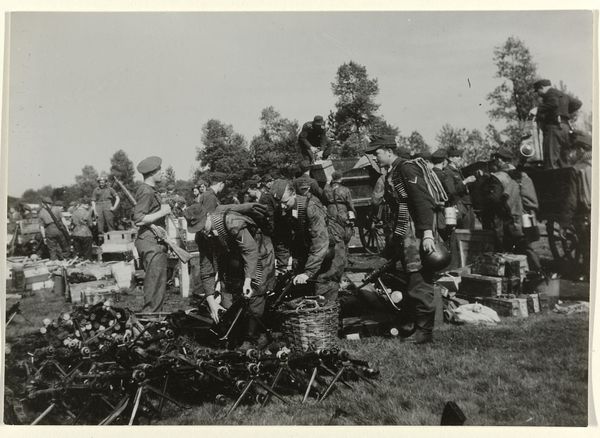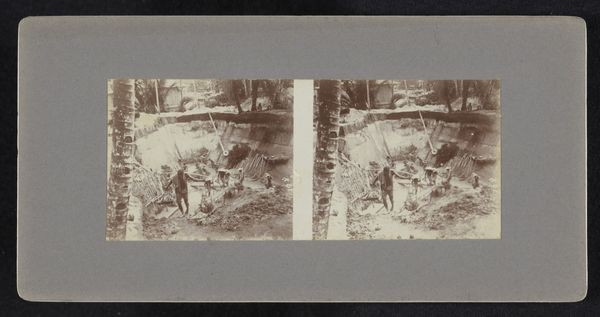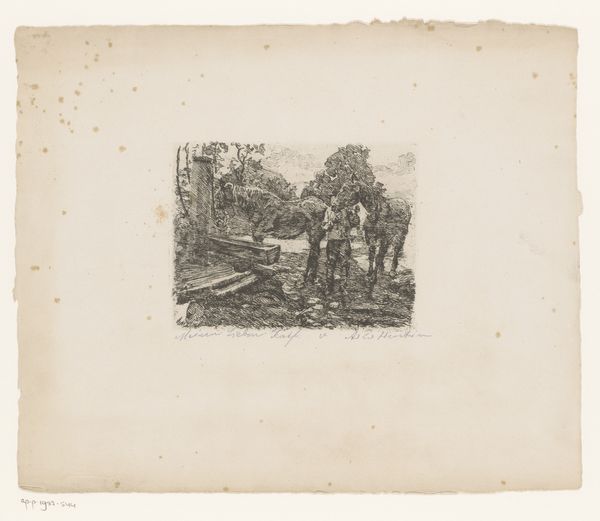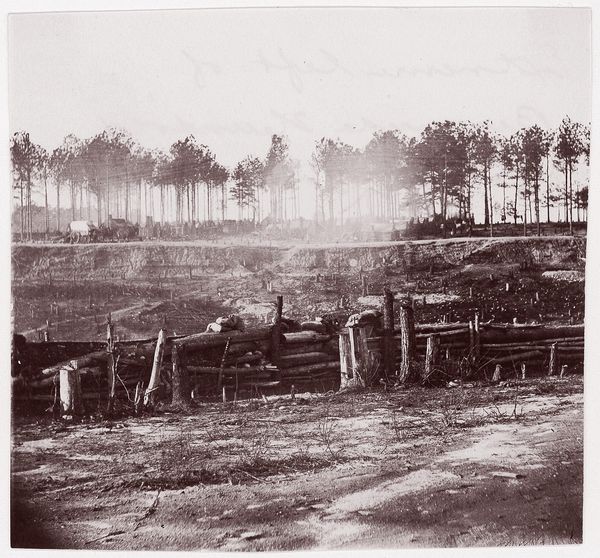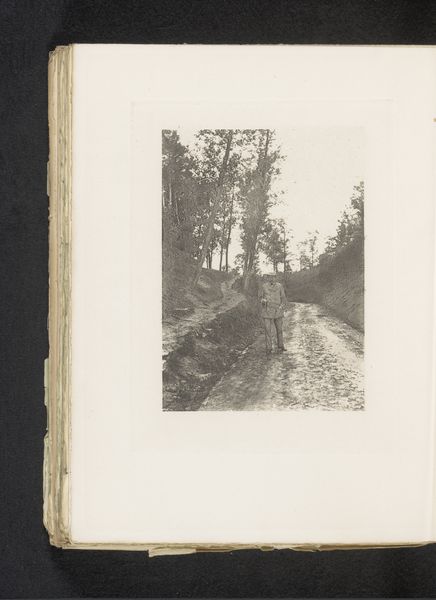
Deze trein Duitsche automobiel-vrachtwagens in het woud van Villers-Cotteret (ten Noorden van Parijs) verbrand, toont de overhaasting van den terugtocht der Duitschers na den beroemden veldslag van de Marne (6-12 September 1914) 1914 - 1915
0:00
0:00
photography, gelatin-silver-print
#
war
#
landscape
#
photography
#
photojournalism
#
gelatin-silver-print
Dimensions: height 90 mm, width 140 mm
Copyright: Rijks Museum: Open Domain
Curator: This gelatin silver print, created between 1914 and 1915, is titled "Deze trein Duitsche automobiel-vrachtwagens in het woud van Villers-Cotteret…," quite a mouthful. It documents the retreat of German forces after the First Battle of the Marne. Editor: My first impression is how eerie and quiet it seems, despite the destruction. There's this stillness, emphasized by the lone figure with a bicycle amidst the wreckage. Curator: Yes, the wreckage is central. Notice the twisted metal of the trucks—materials fundamentally altered by conflict, stripped of their industrial purpose and reduced to debris. The means of war laid bare, reflecting on mass production and the consequences of consumption, of both materials and lives. Editor: Absolutely. This photograph captures the devastating impact of war. It speaks volumes about the sociopolitical and historical landscape, the great powers clashing. I think the image presents a crucial interrogation into whose labor and materials fuel conflict, and who profits. Curator: Consider the medium too. Gelatin silver prints, then a relatively new technology for capturing the stark realities of war. It brings the experience to a wider audience, influencing public opinion through visible documentation. The way the light interacts with the silver is, in and of itself, a complex material process. Editor: It makes you wonder about the photographer's access, their potential biases, and the editorial process behind disseminating such potent imagery to the public. Photojournalism holds power and demands responsibility. Curator: Indeed. Looking closer, consider the physical act of salvaging or collecting remnants on that path… It's compelling to imagine these scraps ending up repurposed. The inherent utility even in wreckage reflects both desperation and a tenacious will to reuse discarded material. Editor: Ultimately, it is a reminder of the deep scars war leaves behind—both visible and invisible, impacting not just landscapes but also the collective psyche. These burnt vehicles function as material testimonies of an intersectional history. Curator: It gives a sense of reflection upon the environmental and material waste created from that landscape as a space. Editor: Yes. It is an impactful photograph.
Comments
No comments
Be the first to comment and join the conversation on the ultimate creative platform.
